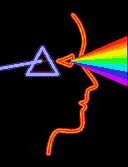
The Unusual & Unexplained
Strange Science * Bizarre Biophysics * Anomalous astronomy
Archaeology Astronomy Biology Geology Geophysics Mathematics Psychology Physics
From the pages of the World's Scientific Journals
|
Science Frontiers is the bimonthly newsletter providing digests
of reports that describe scientific anomalies; that is, those
observations and facts that challenge prevailing scientific paradigms.
Over 2000 Science Frontiers digests have been published since 1976.
These 2,000+ digests represent only the tip of the proverbial
iceberg. The Sourcebook Project, which publishes Science Frontiers,
also publishes the Catalog of Anomalies, which delves far more
deeply into anomalistics and now extends to sixteen volumes, and covers dozens of disciplines.
Over 14,000 volumes of science journals, including all issues of Nature
and Science have been examined for reports on anomalies. In this
context, the newsletter Science Frontiers is the appetizer and
the Catalog of Anomalies is the main course.
SubscriptionsCompilations of back issues can be found in Science Frontiers: The Book, and original and more detailed reports in the The Sourcebook Project series of books.
The publisherPlease note that the publisher has now closed, and can not be contacted.
|
||
  | ||
Knowledge Computing Other links
| ||
Search powered by Zoom Search Engine